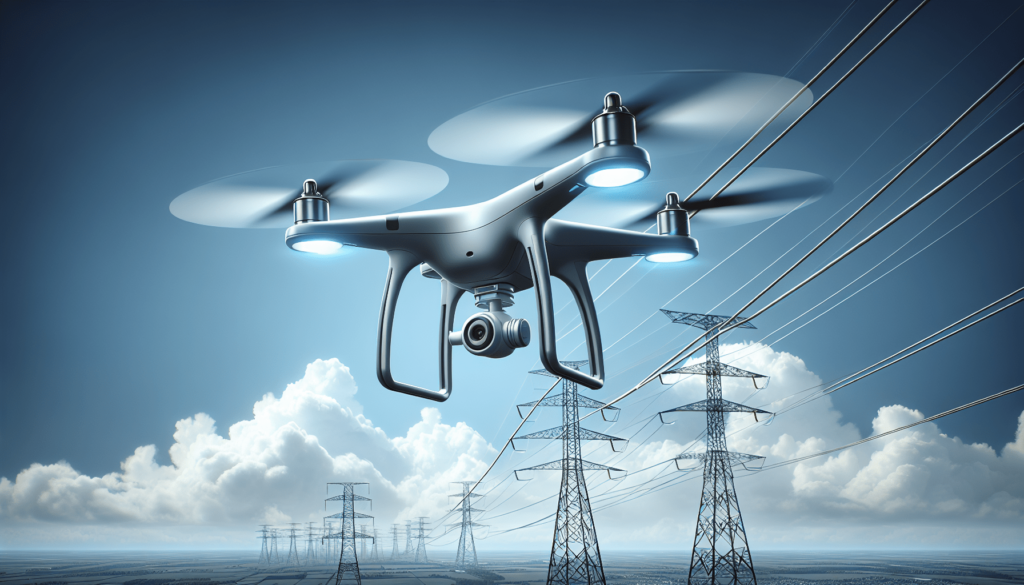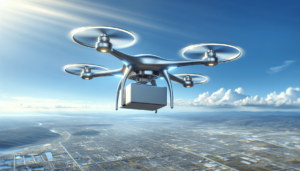How often do we consider the complexities behind the infrastructures that power our modern life? As I sip my meticulously brewed coffee, I’m reminded that the electricity powering my morning ritual flows along an expansive network of power lines—an unseen marvel of innovation and engineering. At the same time, I marvel at the bridges that enable our daily commutes, seamless connections spanning vast rivers and gorges. Maintaining these infrastructure components is critical to ensuring their safety and functionality, which poses questions about efficiency, durational exposure, and the risks faced by inspection teams.

Bridging the Gap: The Role of Drones in Modern Inspections
In recent years, drones have become an invaluable resource for inspecting critical infrastructure such as power lines and bridges. This industry transformation has introduced a level of precision and safety previously unattainable, all while reducing costs and time frames. But how exactly do these compact, unmanned aerial vehicles achieve these feats, and what makes them an increasingly suitable choice?
Taking Flight: An Overview of Drone Technology
Let’s first set our sights on understanding drone technology as it relates to infrastructure inspection. Typically, drones used in this domain are equipped with high-resolution cameras, LIDAR systems, and thermal imaging capabilities. These devices provide a panoramic overview of structures, capturing data that can be analyzed for existing and potential issues.
For instance, drones outfitted with LIDAR can scan surfaces and offer a digital reflection of the structure, assisting in identifying cracks or deformities at a minuscule level. If you think about it, this is analogous to having a pair of cybernetic eyes, capable of detecting wrinkles within the concrete or metal without a physical touch. It’s as though they stand in for an inspector who can’t possibly grasp such minuscule details from the safety of solid ground.
Unmatched Precision: A Tableside Look
To better appreciate the transformational role drones play, let’s examine their comparative advantages over traditional inspection methods.
| Aspect | Traditional Methods | Drones |
|---|---|---|
| Safety | Involves high-risk climbing or use of heavy machinery | Minimal human risk, operated remotely |
| Time Efficiency | Hours to days | Minutes to hours |
| Detail Level | Limited to visual range and physical proximity | High resolution imaging and analysis |
| Accessibility | Limited by terrain and structure design | Unrestricted access |
| Cost Implications | High due to labour and machinery | Reduced requiring fewer personnel |
When we consider these aspects, it becomes clear why drones are rapidly taking center stage in infrastructure inspection.
Power Lines: Maintenance from a New Perspective
Using drones for inspecting power lines presents a paradigm shift in how these vital components are maintained. I can only imagine the challenges traditional inspectors faced—scaling great heights, battling adverse weather conditions, all while navigating complex electrical paths.
Safety in the Sky: Benefits for Workers
With drones, the potential risk to inspection teams is substantially reduced. These autonomous or remotely-operated devices mean that human beings no longer have to risk their lives dangling from high-altitude lines amidst potent electrical currents. Instead, inspectors can oversee drone inspections from a safe, grounded distance, translating data collected by these aerial scouts into actionable insights.
Efficiency and Effectiveness: Droning Down Inspections
The efficiency drones bring to the table cannot be overstated. Traditional methods, such as helicopter inspections, are not only costly but also inefficient, given the fuel consumption and logistics involved with airspace management. Drones offer an agile, rapid-response solution. They can navigate complex terrains, dodging obstacles that would deter bulky helicopters or cherry pickers, and reach angles a human inspector might never.
The example of power line inspections underscores not just improved safety and efficiency, but also the cost-effectiveness of implementing drone technology.

Bridges: Beyond the Imagined Limitations
Bridges, those stoic stalwarts of passage, also stand to benefit greatly from drone-assisted inspections. Combining traditional engineering know-how with modern technology creates an opportunity to surpass what we once believed possible.
Crossings Reimagined: The Transformation Brought by Drones
Inspecting bridges is historically a time-consuming and dangerous task. It typically involves closing sections to traffic or using specialized cranes and boats for access. This incurs not just inspection costs, but also expenses from disruptions to traffic and the economy. Drones allow continuous traffic flow while inspecting, mitigating both the literal and financial hang-ups that can burden traditional inspections.
Structural Assessments: Peering Deeper Into Materials
Drones do not merely document surface conditions. Their ability to use thermal imaging and LIDAR systems means they can peer into the depths of materials. By identifying heat anomalies or structural shifts invisible to the naked eye, they offer an unparalleled assessment of structural integrity. For example, a thermal imaging drone might detect areas where moisture accumulation has weakened the bridge’s support systems, a potentially life-saving discovery that manual inspections could miss.
The Larger Picture: Drones in Infrastructure Management
While our focus here is on power lines and bridges, these same drone technologies are permeating other areas of infrastructure management—from railways to dams and everything in between. As we look to a future where drones play an integral role in infrastructure safety, new opportunities for growth and development emerge.
Pioneering Paths: Future Developments and Innovations
Drone technology is continually evolving. New models are designed with more specialized sensors, smart navigation functions, and data analytics capabilities that enhance their utility. Imagine a future where drones perform predictive maintenance, flagging areas for repair before damage becomes severe—a level of preemptive action that could revolutionize how we approach infrastructure upkeep.
Furthermore, advancements in artificial intelligence (AI) could allow drones to independently analyze collected data and create maintenance reports. While we dread leaving much to machines, this is an area where embracing technology may indeed be our strongest ally.
Overcoming Challenges: Regulatory and Technical Hurdles
As promising as drones may be, the journey towards their full integration is not without challenges. Regulatory hurdles are perhaps the most formidable; airspace is heavily regulated, and navigating the tangles of permissions and compliance isn’t trivial. Moreover, operators require significant training to ensure safe and effective flyovers.
The necessity of technological sophistication also presents a barrier. Investment in technology, the development of reliable data transmission, and cybersecurity to protect sensitive data are critical considerations. These challenges, while daunting, represent hurdles that must be overcome to unlock drone technology’s full potential.
Concluding Thoughts: A High-Flying Future
Embracing drone technology for inspecting power lines, bridges, and other infrastructures offers a multitude of advantages that are difficult to ignore. Safer conditions for inspections, improved accuracy and efficiency, and reduced costs all contribute to the illuminated future these devices promise. They transform not just how we maintain but also how we conceptualize our infrastructural web, inviting us to think differently about progress, safety, and how we might best preserve the networks that form our way of life.
For now, as I enjoy the convenience of energy at the flick of a switch and cross bridges spanning picturesque waters, I do so appreciating the unseen guardians overhead—each drone a sentinel, quietly protecting the pathways and the pylons that keep our world connected.


